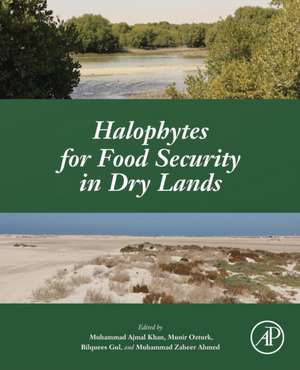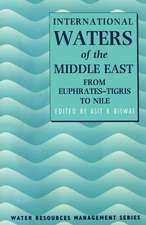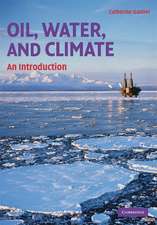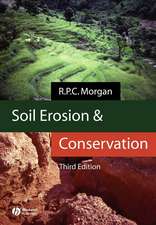Halophytes for Food Security in Dry Lands
Autor Muhammad Ajmal Khan, Munir Ozturk, Bilquees Gul, Muhammad Zaheer Ahmeden Limba Engleză Paperback – 17 sep 2015
The book touches on food crises in dry regions of the world and proposes halophytes as an alternate source of consumption for such areas. Halophytes, those plants that thrive in saline soil and provide either food source options themselves, or positively enhance an eco-system’s ability to produce food, and are thus an important and increasingly recognized option for addressing the needs of the nearly 1/6 of the world’s population that lives in these arid and semi-arid climates.
Including presentations from the 2014 International Conference on Halophytes for Food Security in Dry Lands, this book features insights from the leading researchers in the subject. It is a valuable resource that includes information on the nutritional value of halophytes, their genetic basis and potential enhancement, adaption of halophytes, and lessons learned thus far.
- Provides comprehensive coverage of the importance and utilization of halophytes to compensate the demand of food in whole world especially in the dry regions
- Contains insights from ecological to molecular fields
- Includes edible halophytes as well as those that enhance food-producing eco-systems
- Presents information for improving abiotic stress tolerance in plants
Preț: 414.99 lei
Preț vechi: 532.69 lei
-22% Nou
Puncte Express: 622
Preț estimativ în valută:
79.42€ • 86.24$ • 66.71£
79.42€ • 86.24$ • 66.71£
Carte tipărită la comandă
Livrare economică 15-29 aprilie
Preluare comenzi: 021 569.72.76
Specificații
ISBN-13: 9780128018545
ISBN-10: 0128018542
Pagini: 360
Dimensiuni: 191 x 235 x 19 mm
Greutate: 0.62 kg
Editura: ELSEVIER SCIENCE
ISBN-10: 0128018542
Pagini: 360
Dimensiuni: 191 x 235 x 19 mm
Greutate: 0.62 kg
Editura: ELSEVIER SCIENCE
Public țintă
Researchers, professionals and students in agriculture, ecology and ecosystem functioning institutes, botany students and researchers, landscape planning people, hydrology, and geomorphologyCuprins
- Characterization and function of sodium exchanger genes in Aeluropus lagopoides under NaCl stress
- Multi-temporal soil salinity assessment at very detailed scale for discriminating halophytes distribution
- Nutritional value of Chenopodium quinoa seeds grown under saline conditions
- Halophytes and saline vegetation of Afghanistan, a potential rich source for people
- Overcoming barriers to implementing high salinity agriculture in the Gulf
- Carbon mitigation: a salt marsh ecosystem service in times of change
- Exploiting plants from extreme environments: world enough, but perhaps not time
- The importance of mangrove ecosystems for nature protection and food productivity: Action of UNESCO’s Man and the Biosphere Programme
- The Potential Use of Halophytes for the Development of Marginal Dry Areas in Morocco
- Transcriptome and proteome analysis of genes involved in salt tolerance in the halophyte Suaeda fruticosa
- Sustainable diversity of crops – livestock production system based on optimal utilization in Sinai: A case study
- Cell suspension culture of the halophyte Cakile maritima: Establishment and response to salinity
- Exogenous chemical treatments to improve salt tolerance of cash crop halophytes
- Food and water security for Qatar: a new paradigm
- Genetic and environmental management of halophytes for improved livestock production
- Drought and salinity differently affect germination of "Chenopodium quinoa Willd"
- Plant community and germination of selected halophytes of Sundarbans mangrove forest and diversity
- Halophytic Plant Diversity of a Unique Habitat in Turkey – Tuzluca Salt Mine Cave
- Halophytes a possible alternative to desalination plants: prospects of recycling saline wastewater during Coal Seam Gas operations














